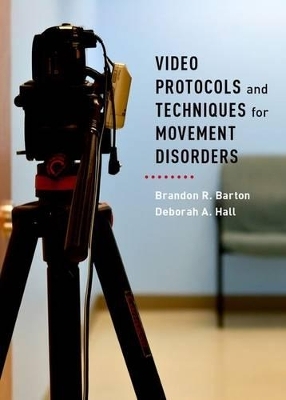
Video Protocols and Techniques for Movement Disorders
Oxford University Press Inc (Hersteller)
978-0-19-994851-2 (ISBN)
Your purchase of Video Protocols and Techniques for Movement Disorders provides you personal access to this online-only product as part of Oxford Medicine Online (www.oxfordmedicine.com http://www.oxfordmedicine.com). At the time of this printing, Oxford Medicine Online allows you to print, save, cite, email, and share content; download high-resolution figures as PowerPoint® slides; save often-used books, chapters, or searches; annotate; and quickly jump to other chapters or related material on a mobile-optimized platform. Oxford Medicine Online's applicable Privacy Policy and Legal Notice (available at www.oxfordmedicine.com) shall govern your use of the site.
Technical Requirements
In order to access Video Protocols and Techniques for Movement Disorders as part of the Oxford Medicine Online website, you need a standard web browser such as: Internet Explorer 9; Mozilla Firefox 9; Safari 5; Google Chrome 17 or 18.
You will also need an internet connection, HTML and JavaScript support. Your operating system should be one of the following: Windows XP; Windows Vista; Windows 7; MAC OSX+.
You will also need MS Office installed on your computer to be able to open images in PowerPoint files.
The Oxford Medicine Online products are best viewed with a screen resolution of 1024x768, although they will also work at higher and lower resolutions. Please note that some tables are wide and so require 1024x768 screen resolution.
Brandon R. Barton, MD, MS is Assistant Professor of Neurological Sciences at Rush University Medical Center in Chicago, IL and affiliated with the Department of Neurology at the Jesse Brown VA Medical Center, also in Chicago, IL Deborah A. Hall, MD, PhD is Associate Professor of Neurological Sciences at Rush University Medical Center in Chicago, IL
Acknowledgments ; IIntroduction ; Why is videotaping important? ; Why should videotaping be standardized? ; Part 1: Basics of Videotaping in the Clinic ; Chapter 1: Technical Aspects of Videotaping ; A. Hardware considerations ; B. Software considerations ; C. Long-term storage ; Chapter 2: Environment for Taping ; A. Videotaping Environment ; B. Equipment and Props ; Chapter 3: Consent Issues for Videotaping ; A. Clinical use, including minors and intellectually disabled ; B. Research use ; C. Educational use ; Chapter 4: Instructions for the Videographer ; Chapter 5: Editing Videos for Publication ; Part 2: Video Protocols and Examples ; Chapter 6: General ; A. Introduction ; B. Videos ; C. Protocols ; Chapter 7: Parkinson Disease ; A. Introduction ; B. Videos ; C. Protocols ; Chapter 8: Atypical Parkinsonian Disorders ; A. Apraxia ; B. Progressive Supranuclear Palsy ; C. Multiple system atrophy ; A. Introduction ; B. Videos ; C. Protocols ; Chapter 9: Deep Brain Stimulator Surgery Evaluation ; A. Introduction ; B. Videos ; C. Protocols ; Chapter 10: Dyskinesia ; A. Introduction ; B. Videos ; C. Protocols ; Chapter 11: Tremor ; A. Introduction ; B. Videos ; C. Protocols ; Chapter 12: Dystonia ; A. Introduction ; B. Videos ; C. Dystonia Protocol ; D. Video Protocol Based on TWSTRS ; E. References ; Chapter 13: Ataxia ; A. Introduction ; B. Videos ; C. Protocols ; Chapter 14: Tics and Tourette Syndrome ; A. Introduction ; B. Videos ; C. Protocols ; Chapter 15: Chorea ; A. Introduction ; B. Videos ; C. Protocols ; Chapter 16: Myoclonus ; A. Introduction ; B. Videos ; C. Protocols ; Chapter 17: Functional Movement Disorders ; A. Introduction ; B. Videos ; C. Protocols ; Chapter 17: Functional Movement Disorders
| Erscheint lt. Verlag | 14.1.2016 |
|---|---|
| Verlagsort | New York |
| Sprache | englisch |
| Maße | 191 x 140 mm |
| Gewicht | 116 g |
| Themenwelt | Medizin / Pharmazie ► Medizinische Fachgebiete ► Neurologie |
| Studium ► 2. Studienabschnitt (Klinik) ► Anamnese / Körperliche Untersuchung | |
| ISBN-10 | 0-19-994851-8 / 0199948518 |
| ISBN-13 | 978-0-19-994851-2 / 9780199948512 |
| Zustand | Neuware |
| Haben Sie eine Frage zum Produkt? |